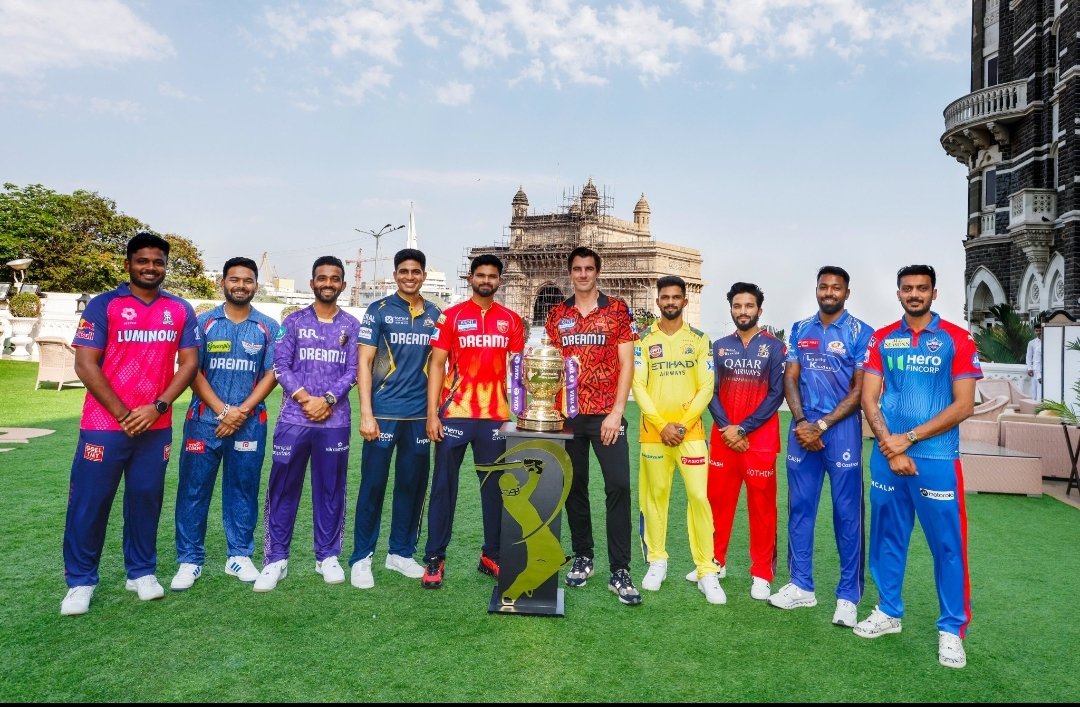Top Headlines
The Two Balls Rule in IPL 2025: A Game-Changer to Tackle Dew
The Indian Premier League (IPL) has long been a breeding ground for cricketing innovation, introducing rules like strategic timeouts and the Impact Player to keep the game dynamic and entertaining. As the IPL gears up for its 18th season in 2025, the Board of Control for Cricket in India (BCCI) has unveiled yet another groundbreaking rule: the use of two balls in the second innings of evening matches. This decision, finalized during a captains’ meeting in Mumbai on March 20, 2025, aims to address one of the most persistent challenges in night games—dew—and promises to reshape the balance between bat and ball.
What is the Two Balls Rule?
The two balls rule stipulates that in evening IPL matches, teams will have the option to introduce a second ball after the 10th over of the second innings. Unlike a mandatory change, the decision to switch balls lies at the discretion of the on-field umpires, who will assess the outfield conditions and the presence of dew. If approved, the replacement ball will not be brand new but a “like-for-like” substitute—similar in wear to the original ball—ensuring continuity while countering the effects of moisture. This rule will not apply to afternoon matches, where dew is rarely a factor, and is specifically designed to level the playing field in night games, which often see the team batting second gain an unfair advantage due to a wet ball that’s harder for bowlers to grip.
Why the Change?
Dew has been a decisive factor in IPL night matches for years, tilting the scales in favor of the chasing side. As evening progresses, moisture settles on the outfield, making the ball slippery and reducing its swing and spin potential. Bowlers, particularly spinners and pacers relying on control, struggle to execute their plans, while batters enjoy a skidding ball that comes onto the bat nicely. This imbalance has often turned the toss into a match-defining moment, with captains opting to bowl first to exploit dew later. The BCCI’s move to introduce a second ball seeks to mitigate this advantage. By providing a drier ball midway through the second innings, bowlers gain a fighting chance to grip and maneuver it effectively, potentially restoring parity between the batting and bowling sides. The decision reflects years of feedback from players and experts who’ve highlighted how dew disrupts competitive balance, especially in high-stakes T20 cricket.
How Will It Work?
The implementation of the two balls rule is straightforward yet nuanced:
- After the 10th over of the second innings, the bowling team’s captain can request a ball change.
- Umpires will evaluate the outfield and the ball’s condition to determine if dew warrants a switch.
- If approved, a ball with similar wear replaces the original, ensuring neither team gets an undue edge with a shiny new one.
This discretionary approach allows flexibility, adapting to varying dew levels across venues and weather conditions. It also places trust in the umpires’ judgment, a factor that could spark debates if decisions appear inconsistent.
Potential Impact on the Game
The two balls rule could significantly alter IPL dynamics:
- Bowlers’ Resurgence: With a drier ball, spinners might extract more turn, and pacers could generate late swing or better control their yorkers in the death overs. This could curb the relentless boundary-hitting that dew often enables.
- Toss Neutrality: Reducing dew’s influence might lessen the toss’s outsized role, making match outcomes more skill-dependent than luck-based.
- Strategic Shifts: Captains and coaches may rethink bowling plans, perhaps frontloading spinners early and saving pacers for a refreshed ball later. Batting sides might adjust their approach, knowing the ball won’t skid as predictably in the latter stages.
However, the rule isn’t without challenges. Frequent ball changes could disrupt the game’s rhythm, and umpire discretion might lead to controversies if teams feel decisions are inconsistent or biased. Additionally, the rule’s effectiveness hinges on how much dew actually impacts a given match—on drier nights, its relevance could be minimal.
Broader Context: A Season of Change
The two balls rule isn’t the only tweak for IPL 2025. The BCCI has also lifted the saliva ban—imposed during the COVID-19 pandemic—allowing bowlers to shine the ball naturally again, a move championed by pacers like Mohammed Shami. The Impact Player rule remains intact, and the Decision Review System (DRS) now covers height-based no-balls and off-side wides, enhancing decision-making precision. Together, these changes signal the IPL’s commitment to evolving with the game’s demands, balancing innovation with fairness. The two balls rule in IPL 2025 is a thoughtful response to a long-standing issue, aiming to restore equilibrium in a format that often favors batsmen. By tackling dew head-on, the BCCI is taking a proactive stance to ensure skill, not conditions, dictates the outcome. As the season unfolds, this rule could redefine strategies, spark debates, and perhaps even inspire other T20 leagues to follow suit. One thing is certain: IPL 2025 promises to be a fascinating chapter in cricket’s ever-evolving story.
Click here for complete schedule for IPL 2025
Also Read:
Jasprit Bumrah : ICC Men’s Test Cricketer of the Year 2024


